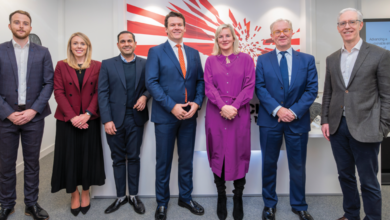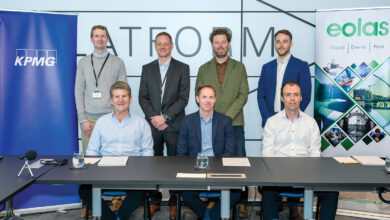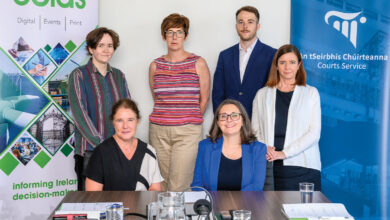Making corporate PPAs work for business
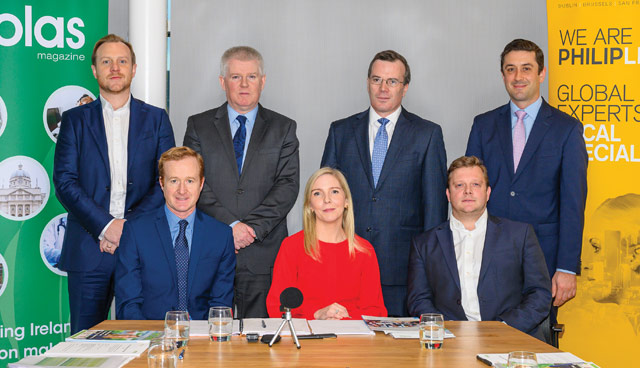
Philip Lee hosted a round table discussion with key energy-focussed stakeholders about the development of corporate PPAs to meet the target of 15 per cent of Ireland’s 2030 electricity demand from renewable sources as set out in the Climate Action Plan and how best to harness their potential.
What are the key drivers/motivations behind corporate PPAs in Ireland?
William Walsh
First, we have to step back slightly and talk about the concept of climate change, through to our Climate Action Plan and the target to deliver 70 per cent of generated electricity from renewables. 15 per cent of that 70 per cent is going to have to come from corporate PPAs. The motivation starts with the burning agenda of climate change and flows right down to the specific action of that 15 per cent mandated by our Government. It goes right down from the philosophical level to the action on the ground level.
Darragh Crowley
From the corporate perspective, what drives us first off is the fit with our sustainability agenda. It’s best practice in renewable power procurement if you can point to a specific asset and say that you are getting your energy directly from one of those. Where the rubber is really beginning to hit the road from the corporate perspective is the economics of renewables are beginning to make a lot more sense. We’ve seen a reduction in costs. In fact, in some proposals we have received, we’re beginning to see discounts on the commodity price of electricity when compared to what you might see on the open market for wholesale electricity costs. Finally, as a financial hedge, we can use a PPA to control costs. Signing up to a long-term power purchase agreement allows us to hedge a portion of risk and give us certainty.
Peter Lefroy
From a supplier’s perspective, corporate PPAs have been around for a considerable period. They haven’t taken off on a great scale here but the immediate driver at the minute is the Climate Action Plan. That has set that mandate of 15 per cent of 70 per cent renewables to be sourced through corporate PPAs. That equates to somewhere in the region of between four and six terawatt hours on the system. The nature of industrial users and the expectation that data centres will play a role means that the load profiles can be stable and predictable. Looking from a supplier’s perspective and trying to balance the intermittency of wind generation, for example, and trying to marry it with unpredictable demand, can create difficulties. Large industrial users and their predictable profiles allow you to know what’s needed and give you something to tether your operations to. The expectation, as we see increasing levels of intermittent sources on the system, will lead to price cannibalisation of the market. When wind blows, the price will drop significantly. There’s a motivation there for suppliers and generators to try and flatten out that revenue profile and have more certainty; corporate PPAs are a potential way to do that.
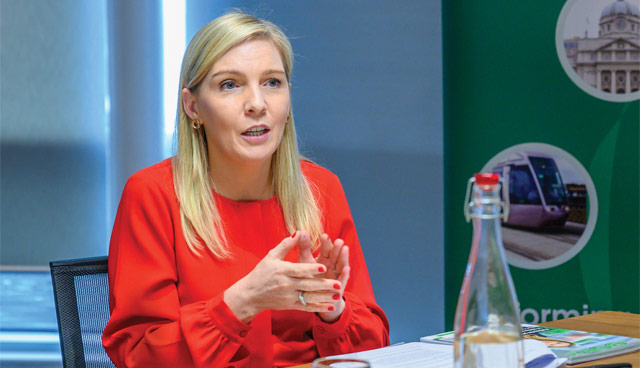
“Now is the time for Government to look at policy levers and to try to figure out how to incentivise generators and corporates. In the national energy and climate plans and progress reports, member states are required to set out the polices and measures that they have put in place to facilitate the uptake of corporate PPAs.” Siobhan McCabe
Siobhan McCabe
An interesting development is the recast Renewable Energy Directive (RED II). It places an obligation on member states to assess unjustified regulatory or administrative barriers to corporate PPAs and to remove them and to facilitate the uptake of corporate PPAs. RED II has to be transposed into Irish law by 2021, so now is the time for Government to look at policy levers and to try to figure out how to incentivise generators and corporates. In the national energy and climate plans and progress reports, member states are required to set out the policies and measures that they have put in place to facilitate the uptake of corporate PPAs. Another driver is price certainty. The idea is for corporates and generators to enter into a contract with a fixed price or a cap and floor pricing structure, to allow some flexibility, yet price certainty. They act as a hedge against fluctuating energy costs in the wholesale market.
Patrick Mohr
We come from a neutral perspective. We are neither a generator nor a corporate but we try to understand the needs of both as we play the role of enabler sitting in the middle. I have to bring us back to a few years ago when EirGrid published its report about the growth of data centres in Ireland. Hyperscale data centres increase demand massively. They are equivalent to small cities. When you have large data centre players coming into Ireland, paired with their corporate sustainability desires, which are driven from HQ, they make a very large investment in the structure that sits in Ireland and their team have to deliver over time. As they have approached the Irish market they have found it difficult. There hasn’t been the availability of renewable credits for these data centre operators to assign to themselves. Now they have to find specific assets and that’s the driver that resulted in the Government policy. It puts Ireland in a somewhat unique space as a country, to have a target on what corporates will deliver.
Donal Flavin
We’re seeing increasing interest from our clients, not alone technology companies, but life sciences companies are also looking at corporate PPAs in a bigger way. One of the reasons for that is that the big global corporations have sustainability agendas. It’s interesting looking at the RE100, a body where members commit to the use of 100 per cent renewable energy. Over half the members are companies in our portfolio with strategic operations in Ireland. These companies are looking at how to procure renewable energy, hence the interest in corporate PPAs. Some of these companies have familiarity with PPAs, particularly those from the US. That’s the primary motivator but companies are also keen to have predictability. The data centres need predictability in their energy supply, and they want it renewable at a determined price. Corporate PPAs provide the means to achieve that.
What are the main barriers to growth in corporate PPAs in Ireland?
Patrick Mohr
We have had no Corporate PPA market in Ireland to date because REFIT has proved too attractive and corporates can’t compete with that.
Siobhan McCabe
I see RESS as a major barrier right now. Generators are not going to sign up to a corporate PPA when RESS is around the corner. Generators expect to be able to get prices similar to RESS, which could be between €55-70 per MWh, while corporates are looking for a discount on the wholesale price. RESS is definitely causing a delay in the development of corporate PPAs right now and it will be interesting to see what happens after the RESS-1 Auction next year when we will have more clarity on the price. That then could spur on the Corporate PPA market when people have more information and less options.
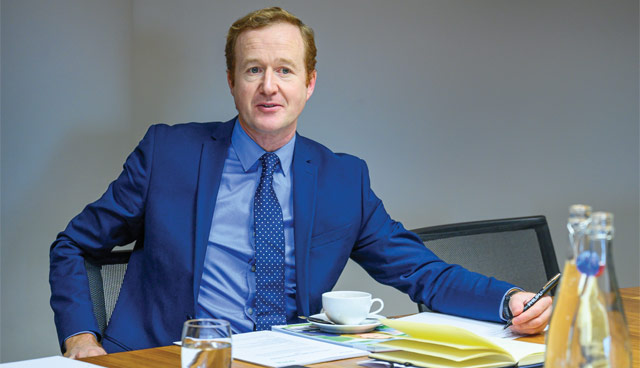
“There is a requirement within RESS to engage the community and it’s important to understand what motivates people to accept renewable energy projects, both onshore and offshore. Understanding how to allay community concerns is very important.” William Walsh
Donal Flavin
The REFIT was very supportive of generators and was a good scheme for them. It provided stability and because of that corporate PPAs were not as attractive in the same way. What you have now are companies waiting to see how RESS starts and works and then they will make decisions. Some generators will not succeed with RESS and may look at doing a Corporate PPA with, for example, a data centre. Corporate PPAs can be quite complex, they’re big legal documents and I think that, until there’s more familiarity and comfort, there will be a material impact on uptake.
Peter Lefroy
What’s driving that is that there is a relatively small pool of generators in the Irish market in comparison with others. In the past it’s been dominated by smaller developers and entities with smaller portfolios. That’s changing, we’re seeing consolidation and larger players like ourselves coming into the market, who have a greater ability to manage the complexity of the transactions we’re talking about. They have a greater ability to manage the consequent risks that come with arrangements like this and the supply and trading capability that you need. That is certainly an issue that will diminish over time. The price expectation is the largest piece for me, and it’s not only driven by the historical REFIT context. There are several obstacles emerging in the Irish market to developing new assets. The onshore planning guidelines, the revision of the rates regime, continuing uncertainty in terms of offshore policy, all of this is driving up the cost of developing assets in Ireland, where the objective of RES and corporate PPAs should be to drive down the cost. It doesn’t make sense to introduce structures that drive down cost and then simultaneously introduce a whole new set of barriers. What you’re seeing with corporates is that the wholesale price is largely driven by the wholesale price of gas, which is probably lower than it should be but is expected to rise. While that continues to be low, the development price for new renewable assets will not drop as quickly as it should and there will be a valuation gap between what a developer needs and what a corporate needs.
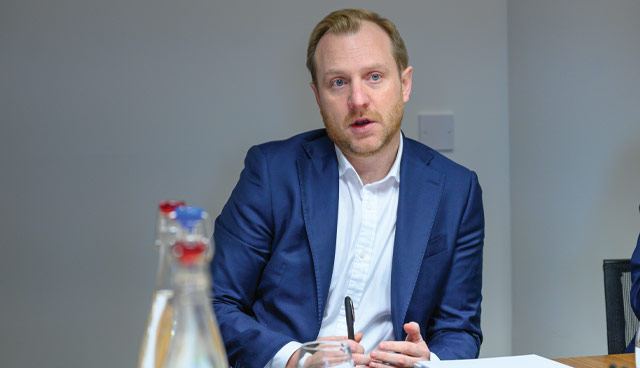
“There has been a step change in the capacity of renewable generation that’s coming out to the market along with a rise in the importance of sustainability and that’s married up with lower prices. It makes for an attractive environment for corporate PPAs to get concluded.” Darragh Crowley
Darragh Crowley
To bridge that value gap, there are practical issues for corporates that need to be addressed. For example, the tenure of PPAs is one issue. For an industrial or FMCG company, 10, 15 or 20 years is considerably longer than your typical two to three-year deal, with a lot of flexibility and get out clauses. Kerry Group, or any other large corporate, need to be comfortable with the length of a commitment such as that and need to be rewarded for that with a lower price. You need to be able to provide a compelling sustainability, business and risk management case to your board to get it over the line. There is also the complexity of the contracting, there is no standard template. That is changing and gathering pace, we’re starting to see slimmer contract terms and documentation become standardised. Once it’s easier for a corporate to analyse documentation, I think agreements will move along quicker.
William Walsh
In terms of the actual infrastructure, specifically the barriers, we come back to the participation in the community in terms of objections to the roll out of infrastructure in the longer term. There is a requirement within RESS to engage the community and it’s important to understand what motivates people to accept renewable energy projects, both onshore and offshore. Understanding how to allay community concerns is very important. Also, from a political perspective, things can slow up very quickly if the political system isn’t satisfied or the populace are not supportive so it’s important to get that right.
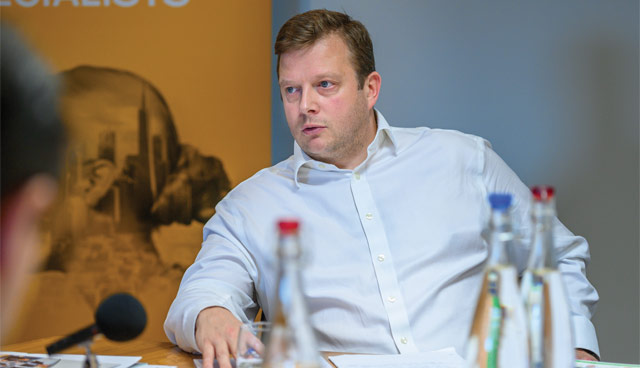
“We are lucky that we have many corporates who have their European headquarters here, but if you’re looking for large tech companies to credibly say that they are powering their data centre infrastructure from renewable energy produced in Ireland, not being able to trade that energy into Europe undermines that.” Peter Lefroy
Peter Lefroy
It’s worth balancing that with the CSR obligations from corporates. They will have obligations that feed down through their supply chain. They cannot have the situation where they are resourcing their energy from a generator or supplier who does not have a good relationship with their local community. It’s a risk and one that the industry needs to tackle and make sure that, even if they’re not engaging with the RESS, they’re still engaging in the spirit that is contained within the RESS. The Irish market is almost entirely decoupled from the rest of the European market and while that situation remains, a large corporate that has operations in other parts of Europe will find it very difficult to focus their resources on such a small, isolated market. We are lucky that we have many corporates who have their European headquarters here, but if you’re looking for large tech companies to credibly say that they are powering their data centre infrastructure from renewable energy produced in Ireland, not being able to trade that energy into Europe undermines that.
What changes are required by industry and government to deliver the 15 per cent RES-E target from PPAs by 2030?
Siobhan McCabe
One area that would help achieve the target is ensuring ‘direct lines’, or ‘private wires’ can be built. Currently, in Ireland you can only have a direct line if your grid connection application has been refused on the basis of lack of capacity and CRU believes it is in the public interest. As far as I am aware there are no direct lines in Ireland. This is not the case in other countries. For example, in Germany direct lines are prevalent. Many corporate PPAs are physical PPAs and lifting such restrictions on direct lines in Ireland would help the growth of corporate PPAs.
Darragh Crowley
I would certainly support that. In Kerry Group the priority for us is energy efficiency; we refer to it as the ‘silent renewable’. The second measure would be a PPA. In the UK there are very few barriers to a private wire PPA. For example, for solar projects on your roof or on land adjacent to your site there are few restrictions to private wire installations. Their main benefit to the corporate is you can avoid all network charges and the power is 100 per cent renewable. We would welcome that model in Ireland.
Patrick Mohr
If the regulations restricting direct lines were changed at the stroke of a pen, PPAs would flourish in Ireland – leading to much more renewables development. There’s a huge opportunity particularly in the food and agriculture sector, where they have a real challenge to demonstrate their sustainability credentials. There is a lot of attention on that sector in particular – some would say unfairly as we are one of the most efficient countries at producing agri-food. However, that doesn’t take away from the challenge of absolute carbon emissions. Enabling that sector to use energy sustainably is something we need to do as a country.
Peter Lefroy
It’s not just energy efficiency onsite but also offsite. The practical trading for offsite would, from a corporate buyer’s perspective, the most favourable structure in terms of ease of understanding would be a base-load slice PPA for 20 to 30 per cent of their demand. This would remove the current mismatch in terms of the shaping and balancing risk aspects of most PPAs. At present it’s difficult to get certainty for 10 to 15 years and that type of approach would help corporates.
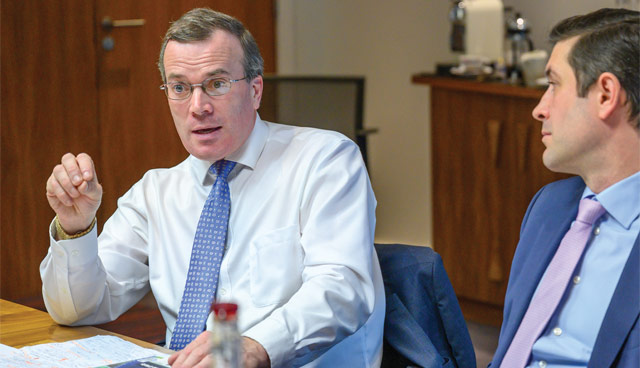
“Corporate PPAs can be quite complex, they’re big legal documents and I think that, until there’s more familiarity and comfort, there will be a material impact on uptake.” Donal Flavin
Donal Flavin
It’s critical to get the balance right between the regulations and the commercial reality. How RESS will operate and how it is viewed by the commercial parties will be very important. Where you have a traditional energy regime you don’t have many PPAs. We need to look at policy levers to make PPAs more favourable and maybe some incentives to encourage companies to take them up.
Peter Lefroy
From a generator’s perspective, it comes back to price differential. We need to see RESS and corporate PPAs co-exist. RESS is the best way to drive down the cost of generation but while the wholesale price of electricity is linked to relatively cheap fossil fuels you are always going to see the corporates favouring the wholesale price rather than a more expensive PPA.
Donal Flavin
The sustainability agenda of companies will come more into play, rather than the cost of energy. Particularly for companies whose customers demand it.
Patrick Mohr
The cost issue is now much broader. The cost of energy is only one element and with carbon taxes and other sustainability measures climate change will only push costs in one direction. Looking at the overall costs from climate change, any addition cost for renewables today may be a good deal. That pressure is coming.
Siobhan McCabe
Yes, that pressure is coming but we need some policy levers now to drive corporate PPAs. Corporate PPAs have been extremely successful in the US because of the tax incentives for both generators and corporates. We should also look at options such as government guarantees to overcome counter-party creditworthiness risk, particularly for smaller companies. Tax incentives or reduced commercial rates would help get some momentum in the market. RED II also calls for the simplification of authorisation processes. A one-stop-shop approach to authorise these projects could be useful in achieving that.
William Walsh
As part of the implementation of the Climate Action Plan we have engaged consultants to look at the policy levers. From a policy implementation perspective, we need to get RESS working, together with corporate PPAs and guarantees of origin – we need to pull all that together. We are getting the best advice internationally. We are looking at how things are working elsewhere and how that can be transposed into the Irish setting. DCCAE is keen to get this implemented quickly and the governance around the Climate Action Plan is fantastic with actions being held to account by the Climate Action Board – which is made up of Secretary Generals from right across government. The grid is going to play a central role in the delivery of the 70 per cent target. We are currently world-class at facilitating renewables on the grid and we have to keep working at that.
What is the future of the Irish Corporate PPA market and what are the opportunities for all industry sectors and smaller corporates to participate in this market?
Donal Flavin
The future is bright for corporate PPAs when you look at the potential demand that is going to be out there. Data centres want renewable energy and they will be the big drivers behind PPAs. You see the life sciences sector increasingly looking in that space too. It’s important, in order to ensure that the potential is maximised, that the balance between what happens on the wholesale market and what could happen with corporate PPAs is good. Things can’t be more favourable on the RESS side. It’s important that PPAs have a standard legal template to give comfort to companies and reduce fear. There has to be flexibility too, maybe with regard to the timeline in case companies aren’t comfortable. It will be down to realistic expectations between both the supplier and the procurer.
Patrick Mohr
At a macro level, I would say the future is very positive. We have an incredibly ambitious policy, we are operating in a global business environment where sustainability has never been higher on the agenda and those are strong drivers to make corporate PPAs work in the Irish market. However, those operating on the ground today have a lot of challenges. The question is how do you develop those projects with all those challenges to deliver the lowest levelised cost of energy projects? It remains to be seen how smaller corporates can be comfortable with 10/15-year contracts, but I would hope that the macro vision drives down to create structures in the market to enable that.
Siobhan McCabe
We need to attract more players in the market and for smaller corporates to realise that corporate PPAs are something that they could benefit from. We need to look abroad at other models that have been successful. Aggregation and consortium structures have worked in other countries, where several smaller corporates come together and agree a Corporate PPA. There was a good example of the Dutch consortium between Google, AkzoNobel, Phillips and DSM where they each took one quarter of the project on similar terms. Another potential model is using an anchor tenant where a large corporate commits to offtake a large portion of a project and a smaller corporate tags along and secures a smaller amount of the project which may be for a shorter term. Aggregation of generators for large-scale PPAs is also an option. There is real potential out there for all sizes of corporate and generators.
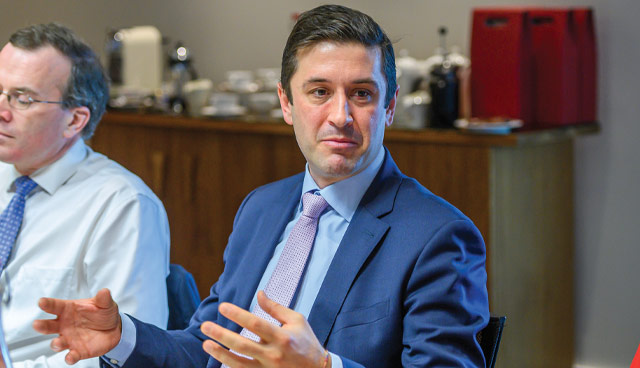
“We have an incredibly ambitious policy, we are operating in a global business environment where sustainability has never been higher on the agenda and those are strong drivers to make corporate PPAs work in the Irish market.” Patrick Mohr
Peter Lefroy
The future is bright for generators and suppliers. Corporate PPAs offer flexibility and the ability to choose how long they want to fix their price for, and who they want to fix it with. We need to be careful and recognise that there will probably always be a need for a RESS type arrangement and that corporate PPAs will not be able to erase that structure. You will always need that framework to encourage competition. So there needs to be a way for corporate PPAs and RESS to sit in conjunction with one another. The barriers that make it more expensive to develop new assets in Ireland compromises our ability to close Corporate PPA transactions and it’s for government to recognise that those barriers are there and to work with industry to remove them and keep driving down the costs.
Darragh Crowley
There has been a step change in the capacity of renewable generation that’s coming out to the market along with a rise in the importance of sustainability and that’s married up with lower prices. It makes for an attractive environment for corporate PPAs to get concluded. On the syndicate deals, they are very interesting and something that needs to come to the market in terms of encouraging the next layer of corporates that would like to participate into the market. On a practical level, it would be very useful for developers to look at things through the lens of the corporate buyer and see what would be useful in terms of internal structure. That is the one thing I think would really push things along from the corporate perspective.
William Walsh
We are heavily involved with the Government and Department of Finance, so from our perspective, getting the policy right is crucial to a successful future for corporate PPAs. What we would see as a success would be big partnerships and aggregation. The bigger companies coming together and potentially putting mechanisms in play that the smaller corporates can leverage off the back of. We developed a support scheme for renewable heat recently and learned many lessons from other jurisdictions and now we believe we have a solid offering to renewable heat industry. Aggregation drives down costs and makes PPAs a much more viable option for companies of all sizes.
The Participants
Siobhan McCabe
Siobhan is a partner at Philip Lee and heads up the firm’s Energy Team. Siobhan specialises in renewables, energy and natural resources law and has an in-depth knowledge of the complex regulatory and legislative frameworks applicable to the Irish energy market. Siobhan has extensive experience advising energy clients on acquisitions, project development and regulatory matters.
Darragh Crowley
Darragh is a Regional Category Manager for Kerry Group since 2018. Darragh is responsible for negotiating energy supply and investment projects for Kerry Group in the region, including development of business cases for energy efficiency projects and corporate PPAs. Prior to joining Kerry Group, Darragh worked in financial markets with Bord Gáis Energy, Mediolanum, Geneva Trading and AIB Capital Markets. Darragh holds a degree in corporate law and an LLB in civil law from National University of Ireland, Galway.
Donal Flavin
Donal is Head of Strategic Policy – Energy, Telecommunications, Digital & Data for IDA Ireland, with responsibility for public policy in energy (including climate action) and technology. He is a member of the Government’s (Department of the Taoiseach’s) Data Forum and prior to 2018, was Vice President, Technology Group, IDA Ireland. Donal was Regional Executive, West/Mid West, IDA Ireland from 2003 to 2006. Donal has agricultural science and MBA degrees from University College Dublin (UCD).
Peter Lefroy
Peter is a Director of innogy Renewables Ireland, a subsidiary of innogy SE which is a leading German energy company. Peter is leading the development of Dublin Array, a >600MW project on the east coast of Ireland. He has extensive experience in the energy industry in Ireland having worked in both engineering consultancy and project development and construction. Peter holds a degree in Mechanical Engineering from University of Limerick and an MBA from Trinity College Dublin. He is chair of the IWEA Offshore Wind Committee.
Patrick Mohr
Patrick is a Senior Investment Manager in Ireland Strategic Investment Fund focused on the Fund’s climate investment pillar. He helped develop ISIF’s climate investment strategy which targets opportunities that position Ireland for a Net Zero Carbon economy. He has been a member of ISIF since the Fund’s inception in 2014 and brings 10 years of transaction and market advisory experience to the Fund. Patrick is a graduate of Cambridge University and UCD where he studied sustainable development and engineering.
William Walsh
William is Chief Executive Officer and Chief Operations Officer in SEAI. He initially held the position of Chief Financial Officer when he joined the organisation in 2013. Prior to joining SEAI he worked for IFI. Prior to that he held senior management positions in several roles in the private sector. William is a Chartered Accountant, holds a Bachelor of Business Studies from Dublin City University and a Graduate Diploma in Strategy, Innovation and Change from UCD.


